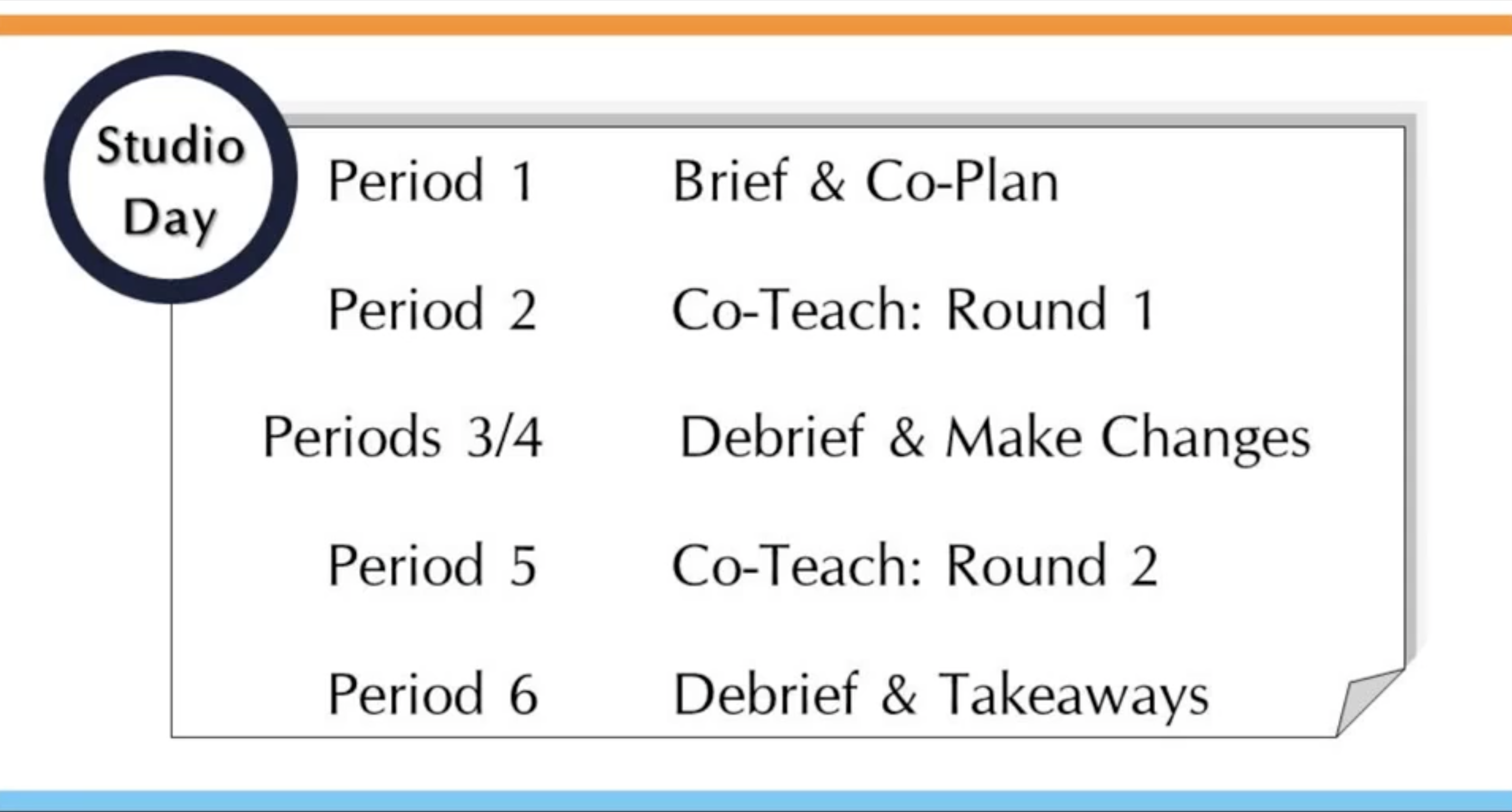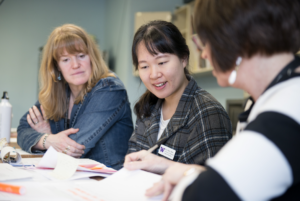At the highest level, Studio Days allow teams of educators to engage collaboratively in planning, teaching, and debriefing in authentic teaching and learning spaces. Here is a sample schedule of what a Studio might look like, mapped onto a 6-period school day.

- Brief & Co-Plan: The team meets to review the goals for the day and lesson, become familiar with the Studio lesson and/or instructional practice and potentially make tweaks, and discuss roles and what to focus on while co-teaching. The broad contours of the lesson and/or instructional practice are planned before the Studio, and we suggest that the host teacher determine how much and what kind of change they’re open to at this stage.
- Co-Teach: The team moves to the classroom and enacts the lesson as discussed. Often, visiting educators sit with student groups and gather data to assess how instructional practice supports student learning and participation.
- Debrief & Make Changes or Takeaways: The team makes sense of data and suggests data-based changes to the lesson after Round 1 or identifies individual or team takeaways from their learning across the day after Round 2. There is often time for additional planning and for appreciations, particularly for the host teacher.
Importantly, all of these structures and resources are grounded in a set of key principles:
| 1. Joint activity is focused on student learning and its relationship to teaching practice. |
|
We collect evidence of student learning (observations, artifacts) and to consider it together before discussing instructional implications. We establish a norm around grounding discussions of instruction in what we saw and heard from students. |
| 2. Teaching is explicitly framed and treated as a collaborative endeavor. |
|
It is not the host teacher’s lesson. It is our lesson, which we conceptualize and plan together to the extent possible. We aim to learn from everybody’s experiences and backgrounds and to come to an overall consensus on instructional decisions. |
| 3. The work is localized in teachers’ specific contexts. |
|
Studio Days look different in each school because they consider schools’ initiatives, professional norms, student populations, etc. We grapple with how science instruction can be realized in varied contexts and support generative adaptations and variations. |
| 4. Joint activity is supported by routines and tools that facilitate generative conversations over time. |
|
Shared routines and tools let us get right into the work together, press for important connections (e.g., between student data and practice decisions), and document our learning over time so we can build from where we left off. |
Principle 4 highlights how Studio Days are often part of ongoing collaborative professional learning efforts. To get started, consider the following questions: How might Studios become part of the flow of a methods course or a grade-level team collaboration? Might such a model help to launch collaborative work across a science department for the year?







 This site is primarily funded by the National Science Foundation (NSF) through Award #1907471 and #1315995
This site is primarily funded by the National Science Foundation (NSF) through Award #1907471 and #1315995